Part of the first day of my trip through some of the wine regions of Victoria (Macedon, Heathcote, Yarra) sees me dropping in for a flying visit to Curly Flat in Macedon. I’m calling on Matt Harrop – a New Zealander (and relation of Sam Harrop MW who I interviewed here > https://winefolio.co.nz/?p=1667) who is now the winemaker there. We start by having a very quick look at the vineyards, then diving into the winery to taste some samples.
WineFolio: How has it been for you guys here so far this year?
Matt Harrop: It’s been a pretty whacky year for us. We are a cool place – we’re at 550 metres above sea level. You work your way up from Melbourne and don’t sort of realise that you’re climbing the whole way. We had this La Nina system – the last of our La Nina years we think – so we knew it was going to be late. ’23 is the coldest growing season we’ve had on record, since 1992 when the vines were first planted.
We’ve got about 15 hectares under vines, starting with a block of Pinot Noir planted in 1992. Followed by Chardonnay in 1993; then at the top of the hill there’s Pinot Noir from ’95 and ’96. What we refer to as our ‘Western’ plantings were in 1997 and ’98. The big block in front of us was planted in 2000, and every year we’ve progressively planted more. Historically it has been planted at 3.2 by 1.8 metres in a lyre trellis.
WF: Oh, so like Kumeu River?
MH: In fact my first vintage was at Nobilo’s so I knew Michael Brajkovich well, but haven’t seen him for years. It’s the only kiwi Chardonnay I buy. He’s a wizard, a genius. When you look at how he’s done it – and we’ve spent a lot of time reading articles and looking at it… his lyre splits quite low and he’s got an eighteen degree angle on his VSP. Whereas here they come higher to the point where they’re coming back down a little bit, and they’re vertical, and widely planted. Michael’s are at 1.2, with four short canes. It’s a great way to grow a lot of fruit if you’ve got a lot of inputs, like water and fertiliser. We’re around 700mms a year of rainfall, and he’s probably double that.
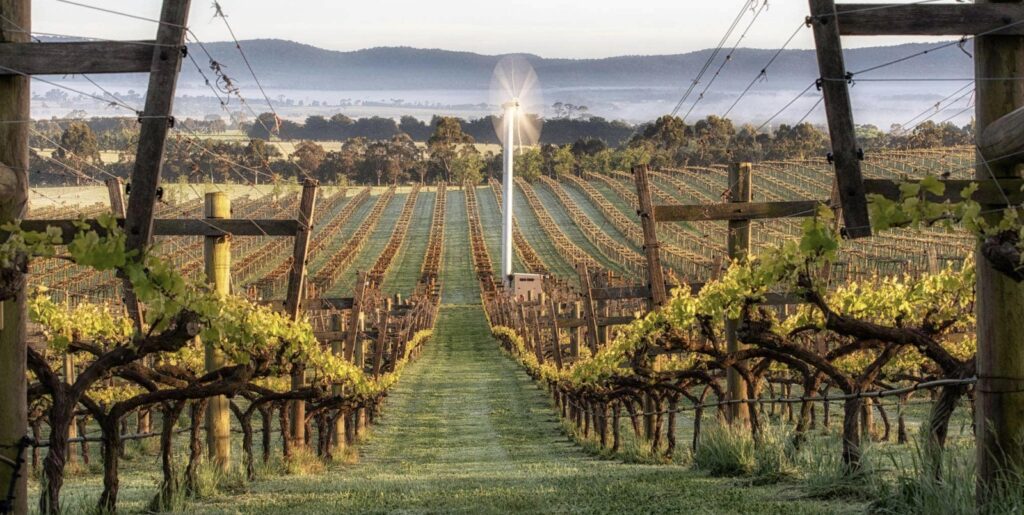
We are about 70% Pinot Noir, 25% Chardonnay and 5% Pinot Gris. There’s a massive thirst for Pinot – especially in Melbourne. It’s very parochial down there, and we have an advantage over most other winegrowers in Australia, as we can ripen Pinot. Adelaide Hills go on about it, but whatever… There’s always one exception to any rule – and what Stephen George set up at Ashton Hills, is it. And that young guy, Liam van Pelt is a very clever guy. They’re one of the highest there and they do make some lovely Pinot. Their issue down there is their latitude. We’re at about 37 South, and they’re about 35. We’re about where Martinborough is. We’re quite continental here – a long way from the sea. We farm very simply and have this mix of young and old vines. We shoot-thin in the Spring and there’s a lot of natural crop control, because we are a frosty site.
The winery was built in 2002, we farm sustainably here, but not organic. In a year like this, you hear stories from places like Heathcote where they haven’t got fruit. We haven’t used any herbicide here since 2006, and we like the effect we get from just mowing underneath the vines. That works for us – keeps the disease pressure down. We do get a bit of botrytis in the Chardonnay, but I don’t think a little bit is a bad thing.
I thought I’d show you a couple of wines that we are just releasing? The Pinot Gris is a bit of tightrope between Sauvignon and Chardonnay for us. It’s not just simple giggle juice. It’s 30% whole-bunch, fermented on skins, kept separately and put it through malo. All through old wood and then blend those two parcels – the white wine and the pink wine – hence it’s got a bit more colour. A little bit of phenolic, a little bit of extract – just to give a bit of interest. Makes it a little bit more food-friendly too. It is what it is – even people making great ones like Zind Humbrecht… give me a white Burgundy any day! I find myself saying “yes, that’s really good… where’s the next bottle of white?”
With Chardonnay, the 2020, for us, was a very tough vintage. The east coast had fires, and Canberra, Hunter Valley as well – so a lot of smoke taint. We had a frost and really unsettled flowering, so low crops. We generally make 1200 dozen of Chardonnay, and we bottled 400 dozen in 2020. Same with the Pinot – bottled about half our usual. Coolish season, very dry but cool. These ‘20s are an anomaly in the Curly Flat story.
WF: I see some bigger oak formats around?
MH: We’ve transitioned away from barriques. We’re either hogsheads or puncheons. When I came here it was 100% barrique, and they can be quite invasive. They can be like a corset – especially in Pinot. You get a much more rapid oxidation in the barrel, and the oak is a lot more forceful. I really like the hogshead. It’s an Australian size. 300 litres, they’re easy to throw around. We’re working hard to amplify our site here – a freshness of fruit is what we’re chasing.
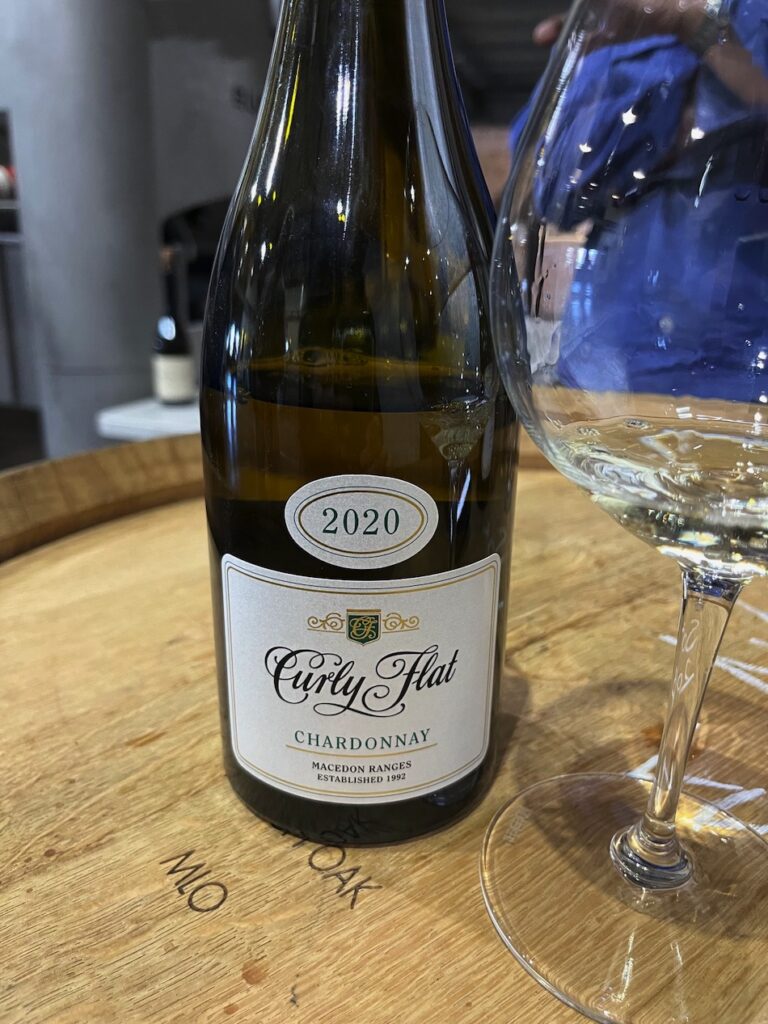
WF: I’m getting a touch of malolactic, but not sensing much battonage?
MH: Not a lot of malo in ’20. We adjust the malo according to the season. This was about 30% of the barrels we put through malo. In ’21 was about 50%. We also have to watch out for getting reductive I suppose. We’re oxidative in the juice handling stage. We get quite reductive in both the Chardonnay and the Pinot. We settle overnight, but we’re not adding any solids back. We probably got to barrel at about 200 NTU. Reduction has become a massive factor in Australian Chardonnay – and in New Zealand as well. I had a Nautilus Chardonnay from ’17 or ’18 – I was there for a couple of years before Clive, way back in the ‘90s. I went from Nautilus to Shadowfax over here.
WF: Those reductive Chardonnays can be very hard though!
MH: I think the smart people are doing it because there’s a little lack of flavour. Loads and loads of sulphide, heaps of solids, high-char wood, warm ferments.
WF: But they get accolades?
MH: They are, in Wine Shows. But I’ve always had this thing you know – if a wine is a young, skinny, hard wine with reduction, then it’s gonna be an old, skinny, hard wine.
WF: Sometimes they just get tougher as they age.
MH: I hate to say it but some of the people doing it best are the big guys like Penfold’s. If you have a look at some of their top-end Chardonnays – the Yattarna for example, they do it really well. You’ll be going to see Dave at Oakridge? Those are fantastic wines. Yes, there’s a bit of reduction but they’re built around flavour. They show we can grow flavour, and complexity, and richness over here.
The ’21 was the first of our La Nina vintages over here. Cooler but no rain in February at all. Then a big burst of heat in late March and into April. Almost a normal crop.
WF: That’s quite a contrast – richer, with a lovely floral nose.
MH: As things are ripening, we go from citrus to white stonefruit to yellow stonefruit. We try to pick at that white stonefruit character. A bit more malo, just trying to relax the palate. Phenolics have been a really dirty word in Australian wines, but they can play a role in any white variety. That pithy finish is one of the things we like. Stylistically that’s where Curly Flat has been for a while.
With our geology, it is quite similar across the site – degraded basalt – but we’ve got this 430-million year old devonian-era sands up here, which we found after a soil survey in 2019. Our ‘Western’ plantings have an easterly aspect – so morning sun. They don’t get the afternoon sun, so the coolest slopes in the vineyard. Quite supple, textured, aromatic, and by 2018 we thought ‘these look really different to everything else we’ve got’ and we now bottle the ‘Western’ individually. Initially a blend of two blocks and two different clones, in 2018 to 2020. And now, we’ve got seven rows of clone 114 that we’ll do separately.
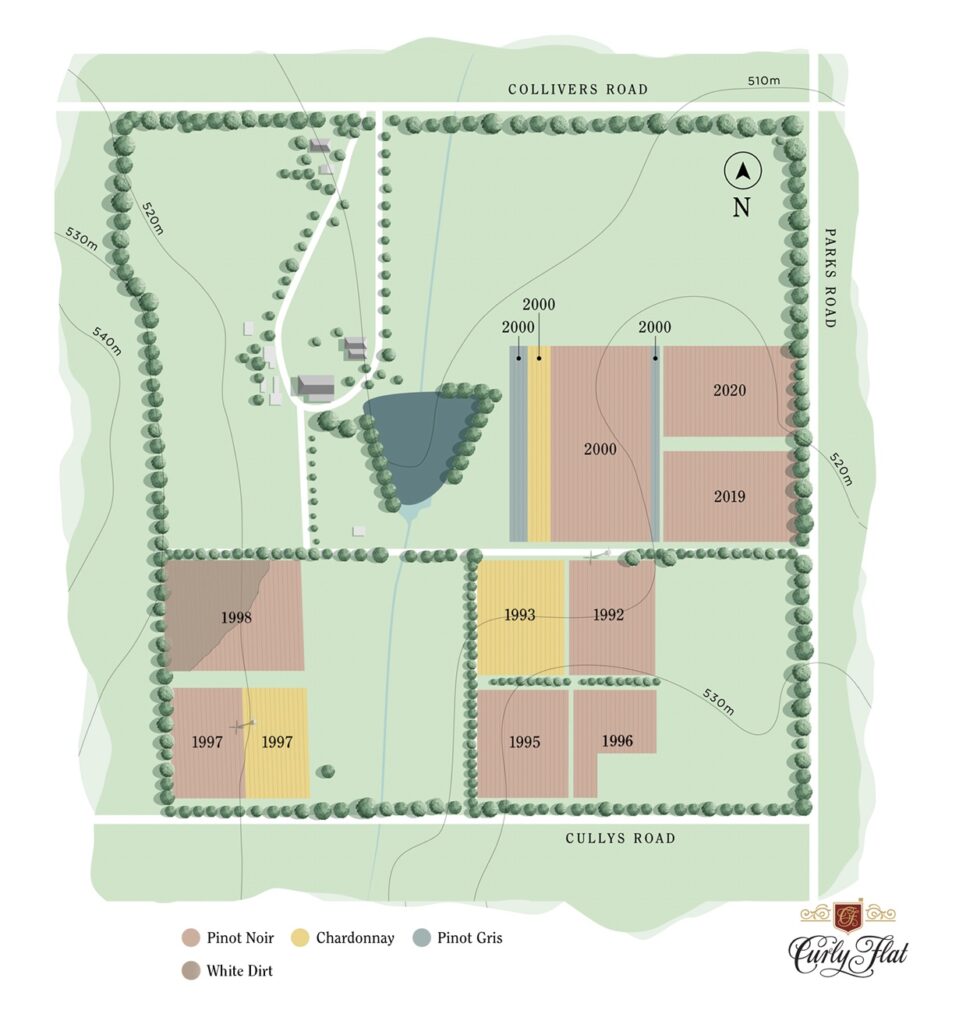
‘Central’ is from the oldest vines in the place – MV6 clone from 1992. I really like MV6. They reckon James Busby brought it over from Clos du Vougeot in the 1830s. That’s north-facing so it cops the afternoon sun. Much smaller berries and smaller bunch architecture. More tannin and very musky red fruit. There’s a bit of it in NZ, but they don’t like it over there. I think it’s genetically modified itself over here, to suit what happens here.
Same can be said for Abel – I’ve yet to try an Australian Abel wine where I’ve gone ‘well that’s better than everything else”. It works well in Martinborough but they’re not such fans of it in Central Otago. That whole clonal thing is really interesting. I read and see about people who I respect in other parts of the world, where the clonal debate has taken a back seat. We’ll be taking some cuttings from our 1992 MV6 and cultivating from that, to plant the place with.
WF: So your own mass selection – taking the best from the best? And will you be doing high-density planting – like we’ve just seen over at Bindi?
MH: Well I just think that after 30 years in the ground here, Pinot has this ability to adapt to site. I take my hat off to anyone, like Michael, who is doing that density of planting, but I see it fraught with all sorts of things. I have too many questions about it. There were cultural reasons why it occurred over in Burgundy. Winemaking, grape growing – it’s a commercial pursuit. And it’s expensive to put a vineyard in anyway, so three times more expensive to put a close-planted vineyard in. We’re planting at 2.2 by 900, which we really like. Just because people do that in other parts of the world and amplify their part of the world – we can do that by using our own farming systems.
You’re tasting the Western Block here. ‘Western’ is about 80% whole bunch and no new oak. We deliberately mature that wine in 2nd, 3rd, 4th use oak. We started doing that after 2018. Tannin profile is softer and more supple. There’s a bit more texture and it is slightly easier – higher pH. A bit of it is to do with the clone, but for me it’s the soil. It’s very aromatic and we don’t get the colour and density. But we make this really bloody beautiful wine. I suppose it is the bookend of Curly Flat, where it’s so atypical Curly Flat. Historically it has been quite tannic with beautiful ageing potential.
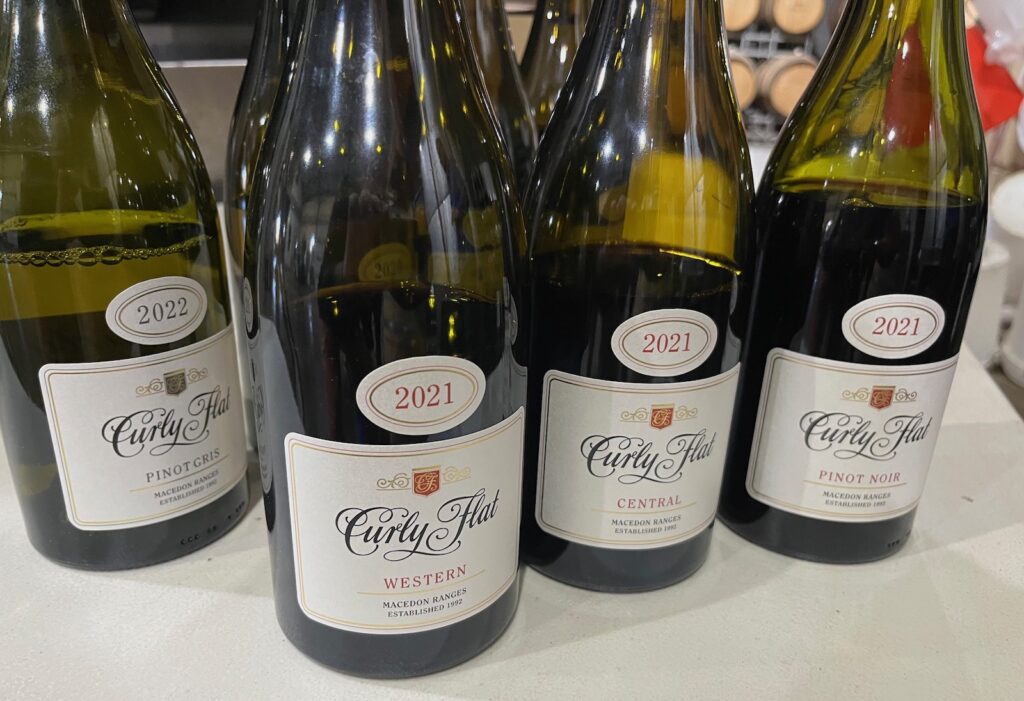
Philip used to bottle a wine called ‘The Curly’ which was a winemaking experiment. 100% whole bunch and a lot of new wood. He loved the wines of Domaine Dujac and he went down that track. We like what goes on underground and we’d like to say that what we do in here (the winery) to be almost irrelevant in some regard. There’s a big effort in the vineyard, like everyone that’s serious about growing wine. Our fermenters are like every other fermenter on the planet. The only thing that we’ve got that no-one else has… is this place.
As a contrast – ‘Central’ – which has been the core of Curly Flat since the first vintage in 1998. MV6, 30% bunches, 30% new oak as well. These two wines are 120 dozen each. They’re bottled I suppose as components and they’re the same price. When we did release them for the first time, we had all those questions. ‘Are they better, what do you like?’ This one is a deeper colour and a denser fragrance, blacker fruit. So you have the bookends – the aromatic peak and the structural mid-palate depth.
And our ‘Estate’ has parcels from everything – every part of the vineyard. We have a really good following – a high percentage of our sales go direct. And it is important to us that nothing interferes. The last thing we wanted to do was to come out and say ‘You’ve been buying Curly Flat for 14 years, but now here’s a $100 bottle’.
WF: This is what people are looking for in a Pinot Noir – generally. That’s on the start of a really good journey. I still prefer the ‘Western’ personally. But that ‘Estate’ will have huge market appeal with that balance.
MH: I love asking the room at dinners and presentations – and no-one is wrong. We think there’s enough difference in the fruit profile to justify the difference in the way we handle them. As opposed to making them the same way. We know, because we’ve used new oak on this wine – that it just dominates the wine.
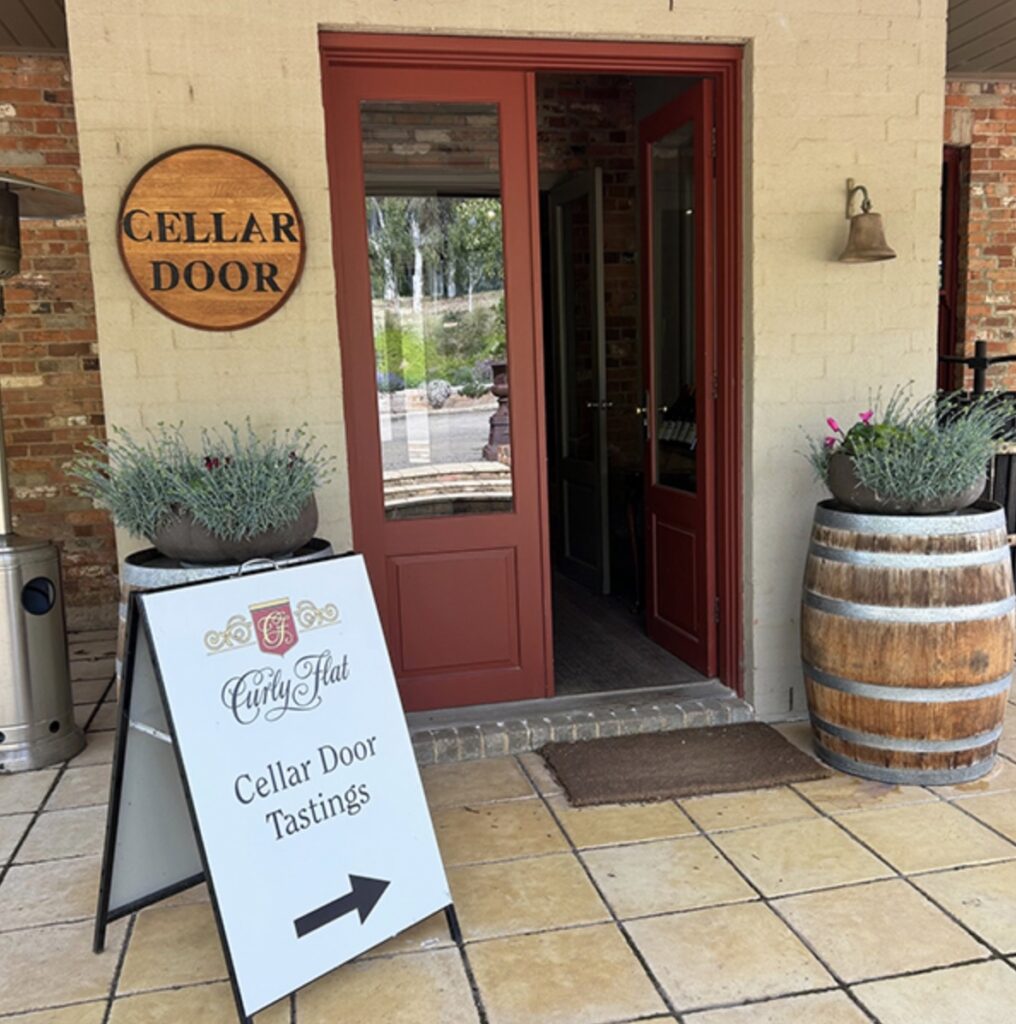
WF: Along those lines – is there one thing that you wouldn’t have done, if you could go again?
MH: Oh God, there’s about 5000 things. I would have spent more time in the Northern Hemisphere sucking up a little bit of what they’re doing there. I haven’t done enough of that. Not a flying winemaker job. Just going in and talking to people – like you’re doing here today. We’ve got access to a lot of wine over here now, but things were different twenty years ago.
From a winemaking point of view – maybe wouldn’t have farmed in Heathcote for ten years, like I did at Shadowfax. I’m glad I’ve got regrets about what I have done, rather than what I haven’t done. With regards to Curly Flat, one thing we will do is slowly converting things over to VSP. Whether we top-work stuff like we’ve done in the past and re-trellis. It is a ten-year project.
Stepping back a year and looking at a wine from 2020… one of the things we love about the ‘20s is that they talk a little bit more about the earth rather than the sky. One of the massive limiting factors in this part of the world is that big orange ball in the sky. It’s a strong influence. If there’s one thing that can obscure where a grape is from, it is too much sun. The 2020 is savoury tannins, more earthy and quite reserved. We think there is a Curly Flat theme. One of the things that shits me about the Aussie industry is that our “most important producers” – The Penfolds of the world are actively working to persuade people that vintage variation doesn’t exist. The rest of us think it’s really important to say to people that wine is not the same every single time. That’s part of the pleasure of it.

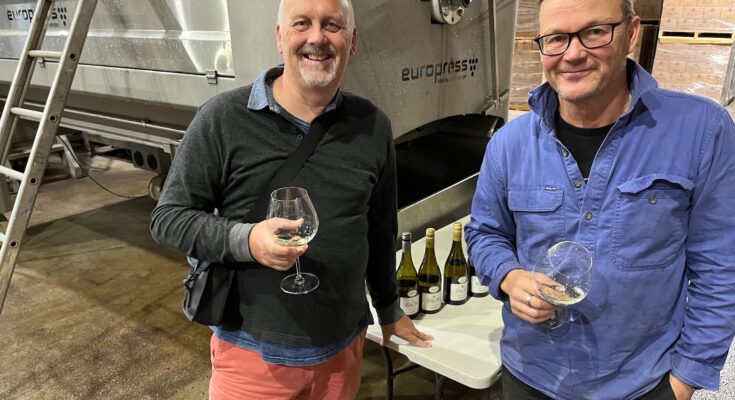
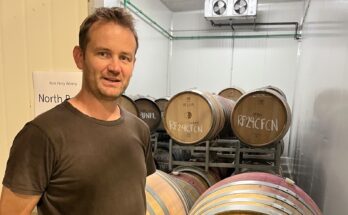
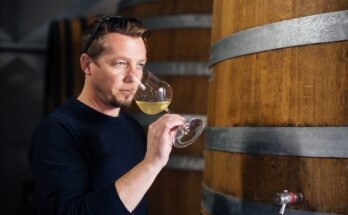
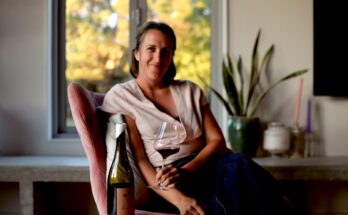
Loving the info!